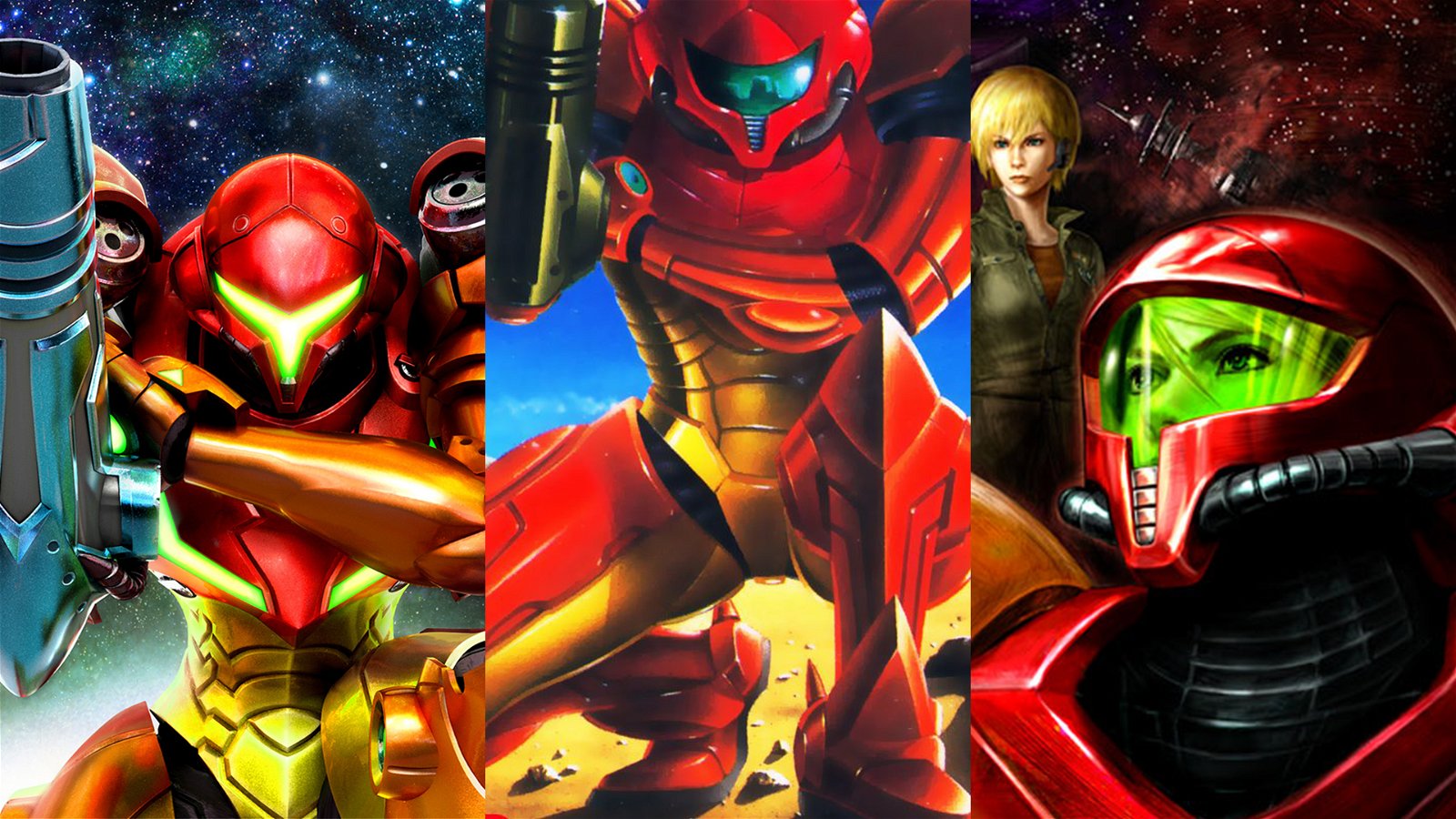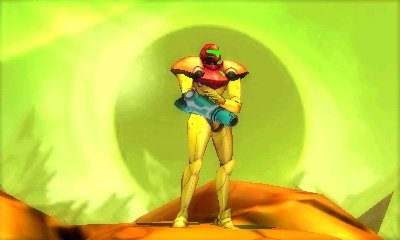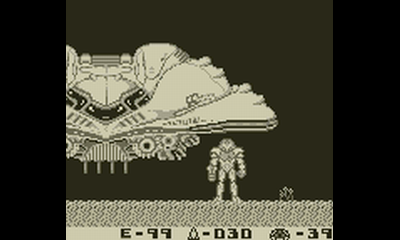It is safe to say that E3 2017 proved to the masses that Nintendo has not only brought back the Metroid series, but has brought it back in a big, big way. Nintendo’s E3 direct teased at the existence of Metroid Prime 4—which unfortunately has no tentative release date—as well as another big surprise which took place during Nintendo’s Tree House event: the legendary games company unveiled a full blown remake of the Gameboy classic, Metroid II: Return of Samus for the 3DS, simply titled Metroid: Samus Returns.
To the uninitiated, A Metroid game on the 3DS may seem like just another great Nintendo property being brought over to the already massive library of great 3DS games that exist. To others, it might even be a title that seems like a precarious purchase at best, due to unfamiliarity or perhaps even the bad aftertaste left from entries such as Metroid Other M and to a degree, the 3DS’s own Metroid Federation Force.
The truth of the matter is Metroid: Samus Returns is a game that needed to be announced, not just because a fully featured entry into the series has been MIA since 2010’s Other M, but also because Return of Samus is a necessary remake of a game that just doesn’t hold up in 2017, yet is a crucial entry in the series.
To understand the importance of Return of Samus on 3DS, we first need to take a look at the original 1991 Metroid II Gameboy title. Metroid II on Gameboy was the direct follow-up sequel to the very first Metroid title for the NES.
For the time, Metroid on Gameboy had rather impressive looking visuals that managed to capture the distinct look and atmosphere of its home console sibling, even with the absence of colour. Due to the monochromatic colour palette screen found within the original Gameboy hardware, Metroid II, for the most part, could only be played in shades of green or black and white, however, with the Super Gameboy attachment, or if played on a Gameboy Color onward, the game would boot in colour—albeit limited in contrast to some Gameboy Color exclusives.
No matter how the game was played, anyone who picked up a copy of Metroid II would instantly feel a sense of familiarity, in that the title felt like a true sequel to Metroid on the NES. What really made Metroid II special wasn’t just the fact that it managed to feel like a console game, but rather the scope of the title.
The titular Metroid enemy in most Metroid games boils down to end-game level fodder, but in Metroid II on Gameboy, the whole plot of the game centred around Samus tracking down the iconic creatures’ home planet and exterminating every single Metroid spawn that dwelled within the labyrinthine-like rock.
As players donned Samus’s power suit and explored SR388, the home planet of the Metroid menace, areas of the map would slowly expand as players found and eliminated the ever evolving forms of the creature, eventually fighting the Queen Metroid boss at the deepest level of SR388.
This mechanic of hunting the Metroid creatures would be the biggest draw and eventually, the biggest downfall for Metroid II. The resolution of the original Gameboy screen was 160×144 pixels, which for its time was serviceable, but for a game like Metroid, the box-like screen real-estate meant that Samus could only move so much without having the screen constantly scroll, which ultimately left the game feeling very claustrophobic and hard to navigate—resulting in a game that only felt worse as the march of time went on.
Flash forward all the way to 2011, Metroid II: Return of Samus got a re-release on the then just freshly minted Nintendo 3DS through its Virtual Console games service. This release gave many players the chance to relive the Gameboy classic, however, it also opened up the game to many new players that have never played the original, or let alone any Metroid game for that matter.
Although the Virtual Console release was well received, for many players this would be the first time they got to experience the game for themselves. Thanks to the Miiverse, Nintendo’s social hub, a look into the game’s metrics revealed many a player’s struggles to progress, from asking for help in understanding the cumbersome UI to navigate the confusing maze that is SR388.
In truth, Metroid II: Return of Samus is still a serviceable game, and for all those posts for help on Miiverse there seems to be an equal number of posts that show the “clear” screen, but the distinct difference between those who post for help and those who triumphantly post their success boils down to the disparity between those who have experience and familiarity with the series and those who had never played a Metroid title prior.
Like the strange, alien and eclectic creatures found within the Metroid games themselves, the series itself suffers from being alien and unfamiliar to newcomers. Probably the biggest contributing factor to this is the lack of new Metroid games releasing in a timely manner.
The series hasn’t been in the limelight since Metroid Other M, which released on the Wii back in 2010. To make matters worse, Other M was panned for not being a traditional feeling Metroid game (amongst numerous other problems). The last real 2D-style entry into the beloved series forces us to go back all the way to February of 2004, which marked the release of Metroid: Zero Mission on the Gameboy Advance—a remake of the NES classic.

The absence of new titles in the franchise with only the occasional re-release of older games has left fans itching for more, to the point where the most dedicated of the bunch have actually made their own Metroid II: AM2R, or Another Metroid 2 Remake.
AM2R was an ambitious passion project by a man named Milton Guasti, better known under his pseudonym, DoctorM64. Guasti’s primary goal was to remake the Original Gameboy Metroid II title using an aesthetic inspired from the Gameboy Advance Metroid games.
The development for the fan remake took a whopping 10 years, which is understandable as the game was made solely by DoctorM64. Aside from significantly better visuals than the original, AM2R also increased the playable screen real-estate, making the game a comfortable romp rather a claustrophobic crawl. Additionally, the game featured all new music, a completely redone UI, a Metroid Prime-inspired logbook system, a better map with deployable markers, as well as new areas and a whole host of smaller quality of life changes.
AM2R unofficially released on August 6, 2016 for Microsoft Windows. Unfortunately, due to a DMCA takedown notice from Nintendo, the game was quickly removed from the DoctorM64’s website. Fortunately, one undeniable truth of the Internet dictates that nothing ever truly leaves once it has been uploaded to the web. Luckily the same was true for AM2R, so those interested in trying the game can still find it if they are willing to dig around a little.
AM2R has been met with overwhelmingly positive press, from not only hardcore Metroid fans but from the games industry as well, with a notable but short lived inclusion in 2016’s Games Award Show. The success of AM2R proved that people want more Metroid, and Nintendo announcing Return of Samus on 3DS will finally bridge that missing link within the franchise.
Ultimately, the lack of brevity between titles coupled with releases of spinoffs such as Federation Force, has left fans thirsty for the true return of Samus, which hopefully will happen once the 3DS remake launches this September.








